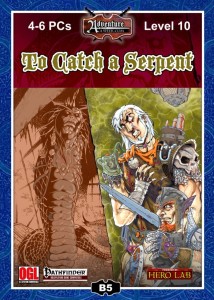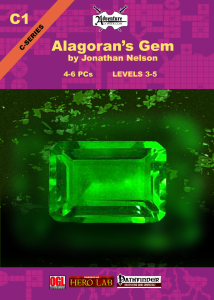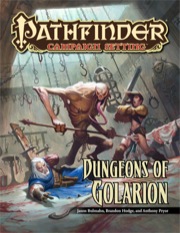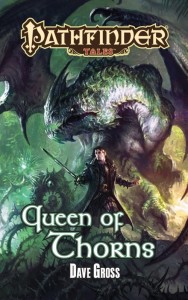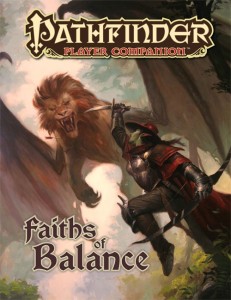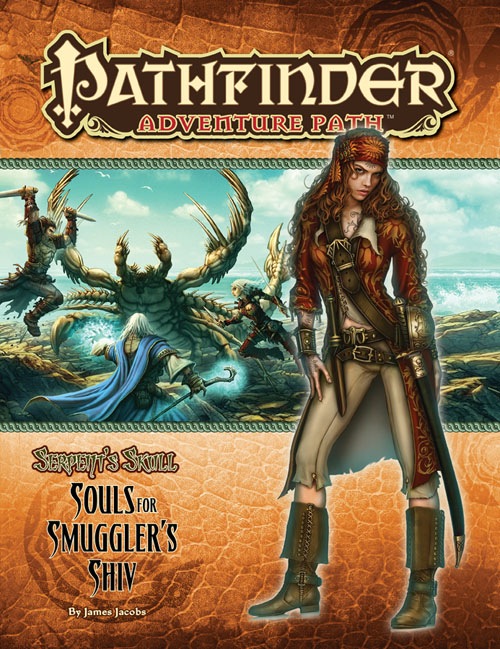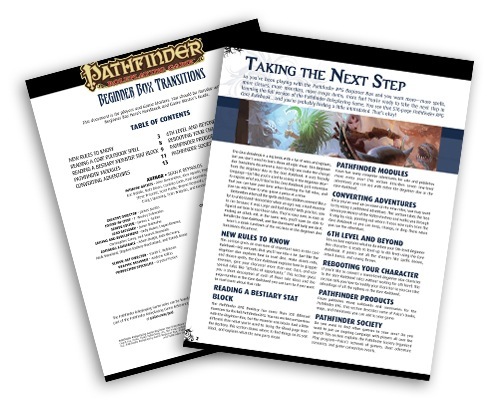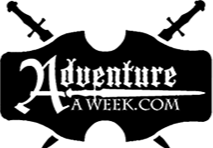 Over the past few weeks I had the opportunity to review some of the materials being put out by Adventureaweek.com. For those unfamiliar with the site, Adventureaweek.com releases a new adventure for Pahfinder and D&D 3.5 every week. These are not short, one or two encounters, but full adventures to run with your group. The adventures are in color and include maps and full layout design.
Over the past few weeks I had the opportunity to review some of the materials being put out by Adventureaweek.com. For those unfamiliar with the site, Adventureaweek.com releases a new adventure for Pahfinder and D&D 3.5 every week. These are not short, one or two encounters, but full adventures to run with your group. The adventures are in color and include maps and full layout design.
What You Get
The site is subscription fee based, for $9.99 per month you will receive one adventure per week and gain access to the back catalog of adventures already released. The adventures are available in web format or PDF. They are beginning to release their products in print form as well. In addition adventures come with maps for the GM, Players, and ready for VTT use. Hero Lab files are included for users of that tool. The web formatted versions are extensively hyperlinked and compatible with tables to ease running games from your table.
The Review
For my review I requested two styles of adventure – a city based adventure and a good old fashioned dungeon crawl adventure. Adventureaweek.com was readily able to provide me with a an example of each from their back catalog. My review is based on the PDF version of the adventures. For this review I am going to look at each of those adventures and then at the service as a whole. At the end we will touch on some of the other things Adventureaweek.com has going on in the future.
To Catch A Serpent was the example of a city-based adventure I received. The adventure is a 10th level adventure for 4-6 PCs. The PCs find themselves in the city of Tawwa amidst a series of murders. Drawn into the investigation the PCs find themselves moving about the city gathering clues that eventually lead to the sewers under the city itself. Within the sewers they seek to find out who or what is responsible for the recent events in the city.
For the GM the adventure opens with an adventure background and then a summary to quickly advise the GM how the adventure is likely to proceed. Several adventure hooks are also provided to help get things underway for the GM and PCs.
Sometimes investigative adventures with 10th level PCs is difficult to pull off. 10th level spellcasters have a myriad of resources available to them to “shortcut” an investigation rather quickly. This adventure has a section to help the GM with that, offering several valuable tips on how to handle some of the more powerful investigative spells 10th level casters will have. I think it does so in a way that won’t make a caster feel cheated, the divination spells will still be useful, just not reveal the whole basis for the adventure up front. Very handy section for this adventure.
Stats for the creatures are provided in both Pathfinder and D&D 3.5 versions. The stat blocks are included at the end of the adventure and are quickly accessible by clicking the appropriate link in the PDF in the encounter area. Clicking the link takes the reader to the back of the PDF where the full stat block resides.
The adventure itself is an interesting romp through the city and under the city to ferret out the source of the problems for the city. The characters will get to encounter several interesting creatures along the way as well.
Alagoran’s Gem was the sample of a good old fashioned dungeon crawl adventure. This one was written for 4-6 PCs at levels 3-5. This one is a C-series adventure which is written to capture the “old school” feel in dungeon crawl adventures. A link to a post on Old School gaming is included in the preface to set the tone for this adventure.
This adventure is sure to be fun for anyone who enjoys the deadliness of a Tomb of Horrors type adventure. Deadly traps, encounters and such that challenge both the player and character are par for the course for this adventure. I would almost feel guilty running a set of established Pathfinder or D&D 3.5 characters through this one due to the deadliness. It would make a great one-shot though for an afternoon of deadly fun!
This adventure also opens with an adventure background, synopsis and hooks to get your characters to the dungeon. The map for this adventure is in color and very well done showing the expanse of this dungeon adventure. There is a nice mix between traps and creature encounters throughout the adventure.
I will certainly be tucking this one aside as an adventure to run on the fly at a convention or a time when I have need of a one-shot adventure to torment my players with. Though very deadly, I really liked the feel of this adventure.
Adventuress Overall
Looking at the two adventures overall, they are put together in a way to make them easy to run with minimal prep. Information the GM needs is handily called out in colored text boxes with icons to designate whether the block is a trap, skill check, read-aloud text, and such. This makes overlooking a key point while running the adventure much less likely. Very handy if trying to run the adventure on minimal prep.
As noted above, these adventures are for use in both Pathfinder and D&D 3.5. There are some differences between these systems. In encounter descriptions there are links to both the 3.5 and PF version of the monster. The GM only needs to click it and they are sent to the correct system stat block. This helps cut down on the number of stat blocks in the encounter text itself which would become unwieldy if two systems worth of stat blocks were embedded in the encounter area itself.
The maps by Todd Gamble are of very good quality. Having a GM map, player map, and VTT map is very useful for the GM.
I did take a look at the web version of Crow’s Rest Island as well. It is extensively hyperlinked to help with moving around in the document. It also includes some sound files to play during the course of the game to add to the ambiance. It is an interesting way to present an adventure and having the choice between a web format and PDF is great for the GM.
Overall Adventureaweek.com seems to be packed with value and a very regular release schedule. If you find yourself constantly looking for new and fresh adventures to run that your players have not already read or played, Adentureaweek.com is well worth checking out.
They do offer Crow’s Rest Island as a free preview to check out before signing up for a subscription. If you are curious about the service, start there and also be sure to check out the FAQ on the site.
Adventure-A-Week Extras
In addition to their different lines of adventures being released on a weekly basis, they set this all against their own campaign world. This world is optional as the adventures can be dropped into other published settings or your own homebrew. But if you are kicking off a campaign and do not have a setting in mind, Adventureaweek.com provides you with one as a backdrop for your game.
Adentureaweek.com is also accepting Adventure Submissions. The process and formatting requirements are detailed on their Submit my Adventure page. A possible way for aspiring adventure writers to get their start in the publishing world.
Rise of the Drow Kickstarter
Adventure-A-Week is also running a Kickstarter for their Rise of the Drow trilogy. This adventure is for both Pathfinder and D&D 3.5, just as the other modules part of Adventure-A-Week are for. The Kickstarter is to raise funds for a hardback book for these modules in full color and expanded content. They have well surpassed their initial goal and are charging through their stretch goals, adding content and art to the book with each goal. There are still 30 days left with this post, so plenty of time to check out this Kickstarter as well.

